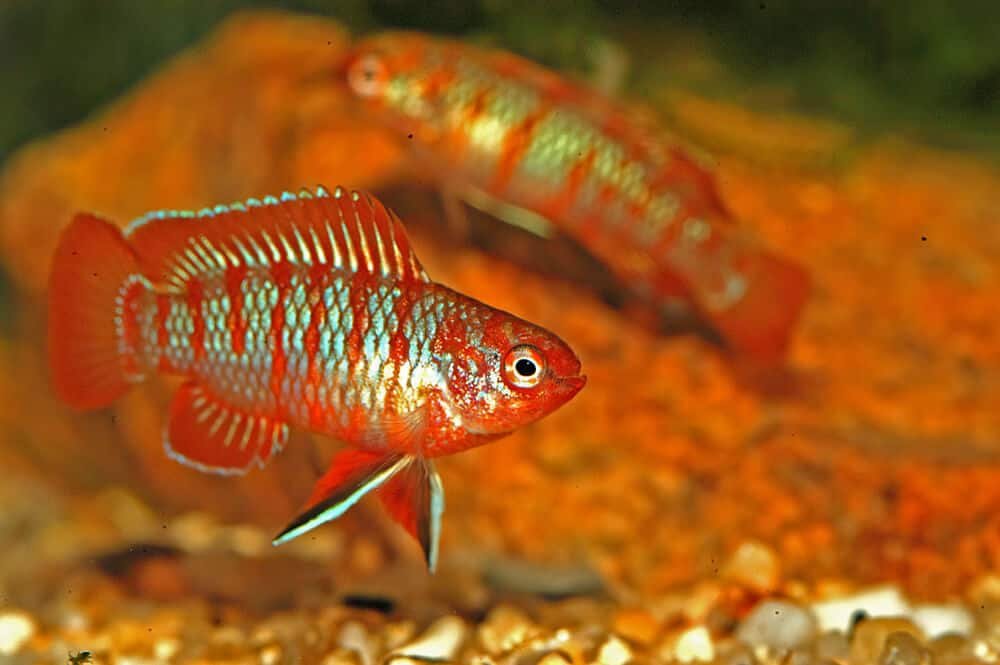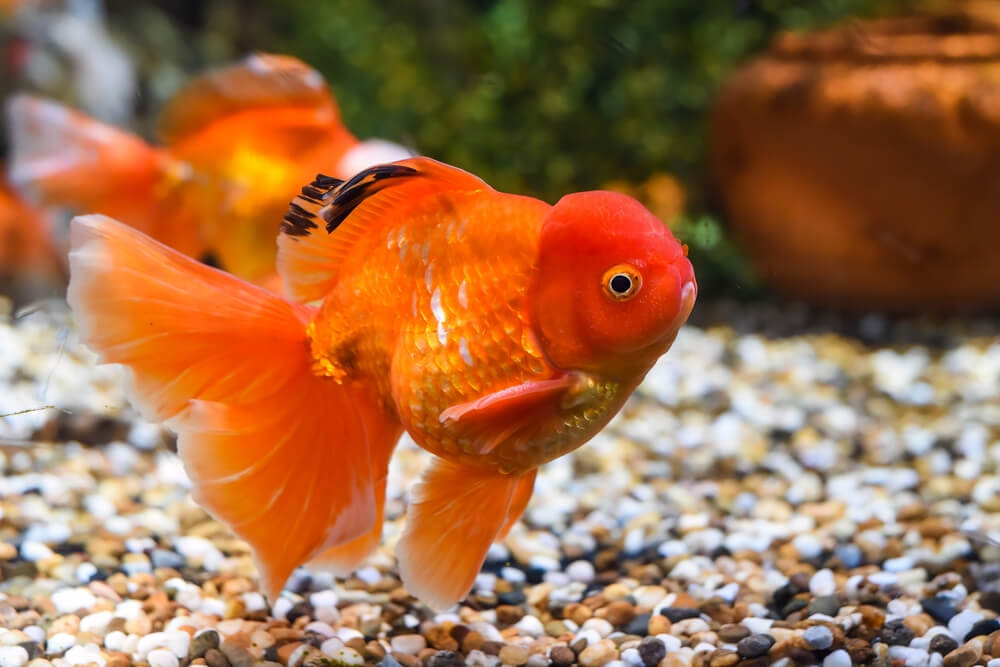Have you ever wondered about the fascinating world of goldfish reproduction? In this article, we will explore the intriguing process of how goldfish reproduce, shedding light on their unique reproductive strategies and offering insights into the life cycle of these captivating aquatic creatures. Prepare to be amazed as we unveil the secrets behind this extraordinary phenomenon. So, let’s dive right in and discover the wonders of goldfish reproduction together!
Reproductive Organs of Goldfish
Goldfish, like many other fish species, have distinct male and female reproductive organs. Understanding these organs is crucial for understanding the process of goldfish reproduction.
Male Reproductive Organs
The male goldfish possesses two main reproductive organs: the testes and the papilla. The testes are responsible for producing sperm, while the papilla serves as the organ through which sperm is transferred to the female during breeding.
Female Reproductive Organs
Female goldfish also have two primary reproductive organs: the ovaries and the oviduct. The ovaries produce eggs, while the oviduct serves as a pathway for the eggs to be released and fertilized.
Differences Between Male and Female Reproductive Organs
The most apparent difference between the male and female reproductive organs in goldfish is their physical appearance. Male goldfish have a more elongated and pointed papilla, while females have a rounder and larger opening where the eggs are released.
Courtship Behavior
Courtship behavior in goldfish is a vital part of the reproductive process. It involves various actions and displays that allow potential mates to recognize each other and initiate the spawning process.
Breeding Season
Goldfish have a specific breeding season, usually during the spring and early summer when water temperatures rise. During this time, their reproductive hormones become more active, leading to an increased desire to mate.
Group Dynamics
Goldfish are typically social animals, and their courtship behavior often involves group dynamics. Multiple males may compete for the attention of a single female, leading to chasing and displays of dominance.
Visual Displays
Goldfish engage in various visual displays during courtship, including fin displays, head nodding, and chasing behavior. These displays allow the fish to show off their vibrant colors and potential fitness as a mate.
Vocalizations
While goldfish are not known for their vocalizations, some studies suggest that they may produce low-frequency sounds during courtship. These sounds may serve as a means of communication or attraction between potential mates.
Spawning Process
The spawning process is the actual act of releasing and fertilizing eggs. It involves several steps that are crucial for successful reproduction in goldfish.
Preparation for Spawning
Before spawning, male goldfish often exhibit increased aggression and territorial behavior. Females may also show signs of readiness by developing a rounder abdomen and displaying a receptive posture.
Egg Release
During spawning, the female goldfish releases her eggs into the water. This process is known as egg release and is often triggered by the presence of a male nearby.
Fertilization
Once the eggs are released, the male goldfish will release sperm into the water, near the eggs. The sperm will swim towards the eggs, fertilizing them externally.
Nest Building
Some goldfish, particularly certain breeds like koi, engage in nest-building behavior. They may create a shallow depression or gather plants and debris to create a suitable spawning site.
Parental Care of Eggs
In some cases, goldfish may exhibit parental care towards their eggs. This can involve guarding the eggs against predators, keeping them clean, and providing oxygenation by fanning water over them with their fins.
Egg Development
After fertilization, the eggs undergo a period of incubation and subsequent embryonic development.
Incubation Period
The incubation period for goldfish eggs varies depending on factors such as water temperature and quality. On average, it takes around 5 to 7 days for goldfish eggs to hatch.
Embryonic Development
During the incubation period, the embryos develop and undergo various stages of development. Initially, the embryos are barely visible, but as time passes, they become more defined, and the eyes and other features begin to form.
Hatching and Fry Care
Once the eggs hatch, the fry require proper care and nutrition for healthy growth and development.
Hatching Process
The hatching process occurs when the fry break through the egg membrane and emerge into the water. Fry are often delicate and vulnerable during this stage and require a controlled and safe environment.
Fry Diet and Care
After hatching, the fry feed on their yolk sacs for nourishment. As the yolk sac is depleted, they need to be fed small, nutrient-rich foods such as infusoria or finely crushed fish flake food. Care must be taken to maintain water quality and provide suitable nutrition to ensure their healthy growth.
Growth and Development
Goldfish fry grow rapidly during their early stages. As they develop, their appearance becomes more distinct, and they gradually develop the characteristics of adult goldfish. Proper care and suitable feeding are crucial for their optimal growth and development.
Factors Affecting Reproduction
Several factors can influence the reproductive success of goldfish.
Water Temperature and Quality
Water temperature plays a significant role in triggering spawning behavior and affecting the development of eggs. Additionally, maintaining clean and well-oxygenated water is crucial for the health and survival of both eggs and fry.
Food Availability
Proper nutrition is vital for goldfish reproduction. A well-balanced diet that provides essential nutrients can improve the overall health and reproductive capacity of goldfish.
Genetic Factors
Genetic factors such as the breed and lineage of goldfish can impact their reproductive success. Some breeds may have specific traits or genetic conditions that affect their fertility or ability to reproduce.
Age and Size of Goldfish
The age and size of goldfish can also influence their ability to reproduce successfully. Young or undersized goldfish may not have reached sexual maturity, while older fish may experience a decline in fertility.
Breeding Control Techniques
In certain situations, breeders or fishkeepers may employ various techniques to control or manipulate goldfish reproduction.
Selective Breeding
Selective breeding involves choosing specific goldfish with desirable traits to breed together, with the goal of producing offspring with those same desired traits. This technique is commonly used to develop new and distinct goldfish varieties.
Hormone Induction
Hormone induction involves the use of hormones to stimulate breeding behavior and reproductive processes in goldfish. This technique is commonly used in research or commercial breeding operations.
Artificial Insemination
Artificial insemination is a method in which the eggs and sperm of goldfish are collected and manually combined to ensure fertilization. This technique allows breeders to control and select specific pairings for breeding.
Spawning Mats
Spawning mats are often used to provide a suitable substrate for goldfish to lay their eggs. These mats mimic the vegetation or debris that goldfish would naturally use for spawning.
Common Reproductive Issues
Goldfish may experience various reproductive issues that can impact their ability to reproduce successfully.
Infertility
Infertility can occur in goldfish due to a variety of factors, including genetic conditions, age, or poor health. Infertile fish may not be able to produce viable eggs or sperm, leading to unsuccessful breeding attempts.
Egg Binding
Egg binding is a condition where a female goldfish is unable to release her eggs, often due to physiological or anatomical factors. This condition can be potentially dangerous and requires prompt veterinary attention.
Egg Eating
In some cases, goldfish may eat their own eggs. This behavior may be triggered by stress, a lack of suitable spawning sites, or insufficient nutrition. Proper husbandry practices can help minimize egg eating behavior.
Predation on Eggs or Fry
Predators, such as other fish or aquatic invertebrates, may prey on goldfish eggs or fry. Providing adequate protection, such as through the use of breeding nets or separate spawning areas, can help mitigate predation risks.
Undesirable Reproduction
While goldfish reproduction is fascinating, it can also lead to some undesirable outcomes in certain situations.
Overpopulation in Aquariums
Without proper management, goldfish populations in aquariums can quickly grow out of control. Overpopulation can strain the tank’s resources, leading to poor water quality and compromised health for the fish.
Unwanted Crossbreeding
If goldfish of different breeds or species are kept together, they may crossbreed, resulting in offspring that possess a combination of traits from both parents. While crossbreeding can be intentional for developing new varieties, it may not be desirable in all situations.
Conclusion
Understanding the reproductive organs, courtship behavior, and various stages of goldfish reproduction is crucial for fishkeepers and breeders alike. By recognizing the factors that influence goldfish reproduction and implementing appropriate techniques, we can ensure the health and success of our goldfish populations. Whether you’re interested in breeding goldfish or simply want to appreciate their natural reproductive behaviors, the world of goldfish reproduction is fascinating and awe-inspiring.






